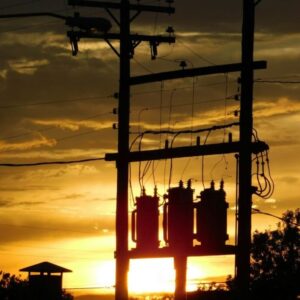
In 2019, the union representing over 30,000 Los Angeles teachers went on strike for six days. United Teachers Los Angeles (UTLA) wanted to transform the city’s school system to make it work for not just teachers and students, but also for the community. Central to this vision was the union’s demand for community schools.
Community schools integrate education with local resources, fostering reciprocal support between schools and their communities. Today, there are roughly 5,000 of these schools nationwide. (To give a sense of scale, there are about 7,800 US charter schools.)
Community schools address students’ social and emotional needs while engaging families and community partners. They also provide extended learning opportunities, culturally relevant curricula, comprehensive support services, and adult education, such as English-language classes for parents. Many engage in collaborative decision-making—bringing educators, school administrators, students, families, and community organizations together.
Too often, “school reform” has focused on creating one unique shift that will somehow make schools more effective. But these reforms rarely holistically tackle the question of what makes a good school.
By contrast, focusing on collaborative problem-solving rather than implementing a single top-down solution, community schools seek to build good schools from the ground up. A 2025 report by our organization, Partners for Dignity & Rights, titled Community Schools and Co-governance: Lessons from Los Angeles and San Diego details some of the key issues involved in making community schools work.
A Community-Centered Approach
Community school leaders understand that complex problems benefit from collaborative solutions.
Community schools jettison the fantasy of finding “one cool trick” to fix schools. Instead, the approach recognizes that building great schools is a complicated, multifaceted endeavor. Solutions must be intersectional and reciprocal. Schools have multiple stakeholders, and the environment is constantly changing. Students and teachers come and go, and the surrounding community shifts over time.
While community schools have over a 100-year history, a revival began in the 1990s. Over the past 30 years, the approach has shifted and grown iteratively. Most efforts center on six key practices:
- Integrated student supports
- Expanded learning time and opportunities
- Family and community engagement
- Rigorous, community-connected classroom instruction
- Culture of belonging and care
- Collaborative leadership and practice
Community school leaders understand that complex problems benefit from collaborative solutions. Education does not occur in isolation; students’ wellbeing is tied to their communities. A child struggling with hunger, instability, or stress cannot excel academically. By providing wraparound services—such as food pantries, counseling, and health programs—community schools create an environment where students can thrive.
At the same time, community school leaders understand that when families struggle, children struggle, so they extend their services out to the community, recognizing that healthy communities create the best learning environment for students.
Lessons from San Diego
San Diego, CA, implemented its first community schools cohort in the fall of 2022. San Diego is home to over 1.4 million residents; its public school district enrolls over 96,000 students. Both the teachers and the district recognized that their schools needed to be able to more nimbly address local community issues.
While the initial push for a community schools initiative came from the teachers’ union in coalition with the community, the district was a willing partner, particularly since the initiative could be partly funded with some of the $4.1 billion made available in 2021 through the California Community Schools Partnership Program (CCSPP)—an initiative that came about through a combination of community and union organizing, legislative advocacy, and pandemic-related educational struggles. The program ambitiously aims to turn one-third of public schools statewide into community schools.
Building successful schools is always challenging, and community schools are no different. Committees need to be built, and they need to include multiple stakeholders that sometimes have fought each other, like teachers’ unions and school districts. A community schools approach requires all parties to sit down and figure out how to work together and ultimately find common ground.
In San Diego, a steering committee of all major stakeholders was assembled to oversee the entire initiative. The committee included teachers, students, family, district representatives, and the Center on Policy Initiatives, a local labor-backed nonprofit that helped build the coalition that pushed for community schools.
Then, there are multiple community schools coordinators—full-time staff members tasked with overseeing and implementing the community school approach. These coordinators often act as mediators, facilitators, and taskmasters, making sure all stakeholders participate, including those who have been marginalized in the past.
To engage stakeholders in collaborative decision-making, each community school has an on-site committee where principals, teachers, parents, students, administrative staff, and the community schools coordinator come together.
The first job of the on-site committee is to assess student and community needs. The committee asks hard questions, such as: How can we strengthen the curriculum? How can we integrate our services into the school day?
The first San Diego cohort had 10 schools, and each school’s on-site committee immediately got to work to engage in deep assessments of their schools and their communities. Initial assessments indicated that mental health was a priority for students. The schools responded by holding student-led wellness fairs and awareness campaigns, and then the schools began providing mental health services on site.
Each school had the freedom to organize their subcommittees. In San Diego, they found that subcommittees were most effective when organized by the stakeholders’ roles within the community. For example, a student subcommittee at one school immediately addressed a problem with the bell schedule. That committee was then empowered to go to the administrator and get the schedule changed to ensure that students and teachers alike had enough time to use the bathroom after fourth period. This small change reduced students’ stress levels and enabled them to better focus on learning in class.
Continuous monitoring and evaluation are included in the San Diego initiative to ensure that schools are indeed serving communities. Data show promising initial outcomes. For example, at Burbank Elementary School chronic absenteeism dropped from 58.1 percent in 2022 to 26.2 percent in 2024.
Community schools thrive in places like Los Angeles and San Diego, where teachers’ unions have built community coalitions.
One way the school achieved this was by instituting home visits with families whose students were chronically absent. All educators were trained on how to conduct “positive” home visits. Instead of starting with disciplinary processes, an educator first visits the family. The visits are not punitive or shaming. Instead, they center around understanding absences and developing strategies to ensure students can make it to school.
Systemic Challenges
Community schools are a powerful tool, yet systemic challenges have hindered adoption. The continual funding cuts to public schools, along with school closures and attacks on educators have often pitted stakeholders against one another in a zero-sum battle for resources.
Community schools thrive in places like Los Angeles and San Diego, where teachers’ unions have built community coalitions. The coalition building effort in Los Angeles began in 2007, leading to the formation of the Reclaim Our Schools LA coalition in 2016. Of course, this work wasn’t easy. Rosa Jimenez, a former UTLA member, told us that “UTLA has had a very fragile relationship with community organizations for a long time and in fact, in those early conversations, many community organizations were very distrustful of the union because of their history of not engaging the community.”
The most effective community school initiatives center collaborative decision-making among multiple stakeholders. This requires embracing co-governance.
One key step in rebuilding trust with their community was the union’s embrace of the principles of Bargaining for the Common Good, in which union demands include not just the demands of union members, but also those of community allies.
When the union sat down to bargain with the district, they had parents and students in the room with them, which completely shifted the dynamic. “That was life changing, to say the least,” a former teacher, Esperanza Martinez, explained to us. “To be able to see the pride in parents and students and community members be at the table with the district and on the union’s side was pretty incredible.”
Another major barrier is the traditional top-down approach to decision-making, which often alienates families and disregards local needs.
Many of the most effective community school initiatives center collaborative decision-making among multiple stakeholders. This requires embracing co-governance, where local knowledge and resources shape policies and programs, rather than imposing district mandates. A key advantage of co-governance is that it makes it far easier for schools to tap into on-the-ground resources and community knowledge.
Here, again, there can be challenges in implementation. Resistance can come from administrators and district leadership reluctant to share power, and it takes time to build the trust necessary for communities to engage in collaborative governance. As Jimenez explained to us, “We assume that we put people in a room—or on a committee—and they just are going to figure things out. We need more practice in decision-making, in working through problems and in moving new ideas [forward]. I think that is the really hard part.”
Preserving Public Education in the Face of Privatization
In the past three decades, education reform has often focused on having schools do more with less, embracing austerity and punitive measures. Instead of strengthening schools through fair funding, competitive teacher salaries, and infrastructure investment, these reforms have led to harmful policies like high-stakes testing, which burden students and teachers without improving outcomes; and voucher programs and charter schools, which siphon off much needed resources.
In the face of a new federal school voucher program and efforts by the administration of President Donald Trump to dismantle the US Department of Education, those who support a strong public school system often are left trying to preserve what already exists, instead of defining how they want to improve the system.
Nonetheless, even in the face of these threats, it is important to preserve a positive vision for public schools. Community schools are a key part of that.
Again, there is no magic here. Successful community schools require time, hard work, resources, and commitment from multiple stakeholders.
Community school initiatives grow at the speed of trust as stakeholders figure out the right structure for each school, assess community need, and engage with local groups. But the approach can be and has been reproduced in thousands of locations across the United States. Done well, community schools provide a way to authentically respond to community needs and holistically support students, parents, and teachers, while also providing an outstanding education.
Bottom line: Community belongs in schools. This means that students, parents, caregivers, teachers, and local community organizations must all get involved to provide the education our students and communities need. Now, while advocates must resist attempts to weaken public schools, we must also point to what works—and demand policy that advances our vision.














